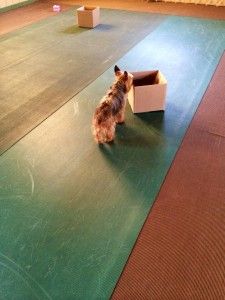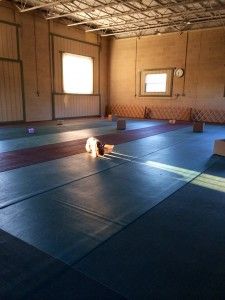We all know that dogs have great noses. They seem to have that magical ability to tell when someone is in the kitchen making something yummy even from across the house! What you may not know is that dogs’ sense of smell is 10,000 to 100,000 times as acute as a human’s. From hunting companions to narcotics dogs, humans have found amazing ways to harness the smelling power of man’s best friend. 
Interested in trying out a new activity with Jack, I just completed scent discrimination classes at my local kennel club. What fun we had! My boyfriend and I often chuckle at Jack’s sniffing, as he’ll put his muzzle to the sky and in a bobbing motion inhale quick short sniffs.
One thing I did not know before taking the class, is that different dogs have different smelling styles. Some dogs are ground smellers. A ground smelling dog will be great at following the exact path of an animal or a person, being able to say “They went by this bush, then to that tree.” An air smelling dog is going to be more direct to the scent, being able to say “The person is over there by the tree.” Dogs will typically incline towards one or the other method of scent which then can be cultivated for different activities.
The easiest game to start with in scent discrimination is finding a treat. I will put Jack in a room, then go around the house hiding treat filled Easter eggs. I then instruct him to “Find It” as he hunts around the house looking for goodies.
In class, we worked our way from finding treats to finding different scents like “Me” which is a cloth smelling like the owner. In nose work competitions, boxes are filled with scents of birch, anise or clove. The dog is then “given” the scent (allowed to smell an item with the same scent they need to find) and then instructed to search the boxes to find that scent. I thought this would be challenging for Jack, but it is amazing how acute a dog’s sense of smell is. I can tell he didn’t like the smell of the oils, yet he was still willing to search for it. 
Additionally games can be played outdoors, such as following the track of a scent around a yard or field. One way to play this at home is to drag a cloth with the given scent around the yard and then hide the cloth at the end point. Encourage the dog to follow the path of the scent, rewarding when they find the cloth. If you want to make it realistic, use the scent of a wild animal, which can be purchased online. Jack loved tracking the scent of pheasant and rabbit.
Some dogs have very obvious signals when they find the scent they are looking for, such as jumping on the box or barking. Jack’s cue is very subtle: he typically lingers at the site of the smell and will put his ears back slightly. He makes me work hard to read his signals! Not all dogs like tracking or nose work. Making it a fun and rewarding game is the best way to engage your dog in scent discrimination. I found it to be a new interesting activity, and after more practice, hope to enter Jack in a nose work trial.




